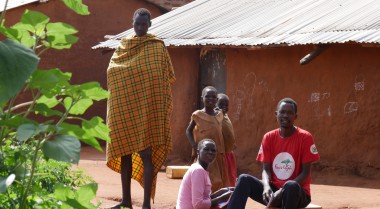
A Sign of Global Leadership: The Implementation of the Escazu Agreement
22 April 2021 is an important day for Latin America and the Caribbean (LAC). Today, the Escazú Agreement – a regional framework that tackles climate change through a human rights-based approach – enters into force!
However, this day should be acknowledged around the world because climate change is a global issue and the implementation of the Escazú Agreement is a critical step towards mobilizing a global action. Driving migration, multiplying conflict drivers, exposing pre-existing inequalities, climate change has created a task that can only be undertaken in solidarity, partnership and joint coordination.
Despite being compared to the 1998 Aarhus Convention, this Agreement has been recognised as unique due to the strong connection it makes between the environment and civil and political rights. LAC once again takes leadership in addressing the common challenges to humanity with the adoption and implementation of the Escazú Agreement.
As such, the Escazú Agreement sets a precedent for international cooperation and multilateralism that is inclusive of all people, promotes human security and non-violence, and builds on the human rights jurisprudence in LAC to build back better.
But what is in the Escazú Agreement for the international community?
The Escazú Agreement provides unprecedented practice in developing a human rights-based approach to climate change and inspires learning for the international community.
The Escazú Agreement is rooted in the human rights approach: It outlines the right of every person to live in a healthy environment and requires national governments to adopt the necessary measures, of a legislative, regulatory, administrative or any other nature, in the framework of its domestic provisions, to guarantee the implementation of the provisions of the present Agreement (Article 4).
The Escazú Agreement promotes a people-centred approach: It requires national governments to ensure the public’s right of free access to environmental information (Article 5) and guarantee mechanisms for the participation of the public in decision-making processes (Article 7).
The Escazú Agreement encourages environmental justice: It compels national governments to ensure the right of access to justice in environmental matters and provide in the framework of its domestic legislation, access to judicial and administrative mechanisms to challenge violations of laws and regulations related to the environment (Article 8).
The Escazú Agreement provides protection for human rights defenders: It calls upon national governments to take adequate and effective measures to recognize, protect and promote all the rights of human rights defenders in environmental matters, including their right to life, personal integrity, freedom of opinion and expression, peaceful assembly and association, and free movement, as well as their ability to exercise their access rights (Article 9). In a region that concentrates around half of all the environmental defenders killed each year around the globe, such a demand conveys an empowering message that highlights the need for peace as a condition for a healthy environment.
This “visionary and unprecedented” Agreement, as such, creates a precedent and a good practice for establishing important inclusive national instruments, strengthening democracy, and ensuring environmental justice.
What happens after the Escazú Agreement enters into force?
The development and signing of the Escazú Agreement is a critical first step in driving the implementation further. If implemented adequately, it will have a broader impact on peacebuilding and development in the region.
The Escazú Agreement will help eliminate various triggers of conflict and build sustainable peace by building citizen participation, ensuring meaningful interaction with diverse local communities, integrating local solutions for more impactful results, strengthening social cohesion and community resilience.
But will this truly be the case? It is now up to the national governments in the LAC region to decide whether to continue its leadership on human rights and climate change action.
National governments, with support of relevant regional and international partners, must work hand in hand with civil society and indigenous communities of their countries to ensure that the Agreement is not only ratified but also implemented, providing more stability and resilience to the region and setting an example for other regions to follow.
Adequate implementation efforts will create a learning space for national governments, local peacebuilders and human rights defenders all over the world and, through solidarity, partnership and joint coordination, this commitment could be expanded beyond LAC for everyone, everywhere.
Find out more in this Infographic!

